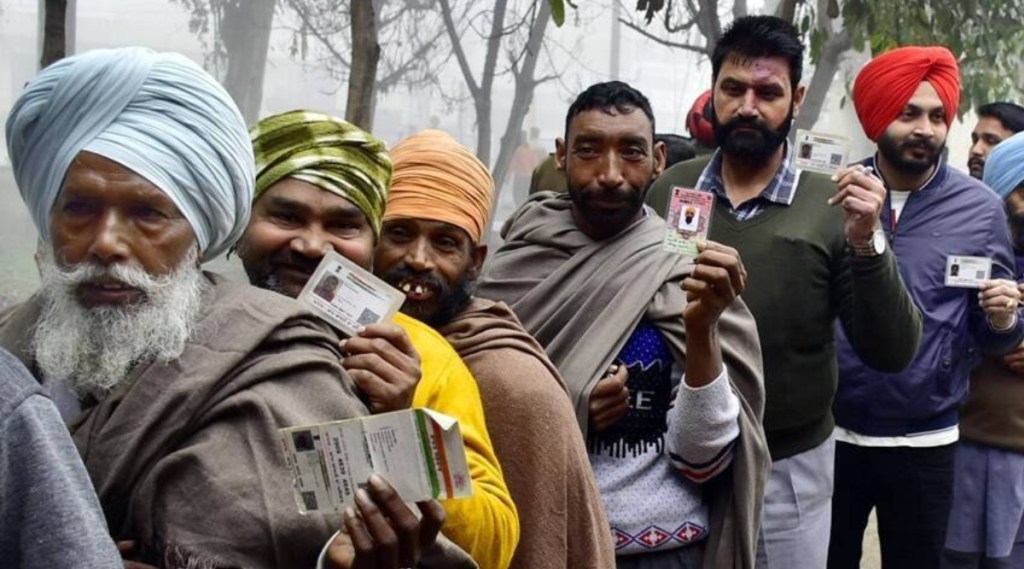India has just concluded a significant set of state legislative assembly elections. Since state elections are no longer in sync with national elections, they act as regular signals and signposts of what might be coming next politically in a way that scattered midterm parliamentary by-elections cannot match. Before the election results were declared, Milan Vaishnav, director of the South Asia programme of the Carnegie Endowment for International Peace, offered a sobering assessment of governance at the state level in India. But the recent state election results may offer a glimmer of light in that otherwise gloomy vista.
Vaishnav argued that federalism in India is not a panacea, or even a bulwark, for the erosion of democracy at the national level. This verdict of erosion comes from international scorecards of the strength of democracy in various nations. India is losing ground because of the stifling of dissent, erosion of checks and balances, and a chilling rise in a majoritarian formulation of national identity. But Vaishnav points out that day-to-day governance in India’s states is of poor quality more often than not. States are run by chief ministers who can also be authoritarian and capricious. State legislative assemblies hardly meet. Judicial institutions at the state level are under resourced and failing to keep up with their duties. In general, many of the institutions of governance at the state level are performing well below expectation, and this is especially harmful because many public goods and services are constitutionally state or concurrent subjects.
On the other hand, the problem of autocratic state-level political leaders is an old one, surfacing even in the days of monolithic Congress party rule just a decade and a half after independence. The national leadership of the Congress made explicit efforts to cut the regional party bosses down to size. That centralization did not do democracy or the country any good. Even with weakened quality of state-level governance, the benefits of decentralisation and federalism seem to still be greater than the costs, even if the Centre claims that it can do things better. Inefficiency may be part of the price of liberty.
Turning to the recent state elections, much of their lesson has to do with the collapse of the Congress party as a political force, leaving as a weak and fragmented alternative only state-level parties dependent on personal leadership rather than a focus of serving constituents. By contrast, the 2018 state assembly elections offered some hope of less centralized political rule. But the Congress learned nothing from that experience, whereas the national ruling party has continued to consolidate its presence across the country, well beyond its traditional strongholds.
The only exception to these trends in Indian democracy is the resounding success of the Aam Aadmi Party (AAP) in Punjab. Here, too, the incompetence of the Congress played a major role. But Punjab had also racked up decades of misrule, difficult to match in any other Indian state. This may seem a surprising claim, given that it is still much better off than many other states. But if one takes account of the environmental and social damage that has occurred in Punjab, the record of its rulers in recent decades seems truly dismal. The most recent government did seem to be turning a corner in this regard, only to be destroyed by the central leadership of its own party.
AAP promises at least a partial alternative to the kinds of state-level political leadership that Vaishnav critiques in his analysis of Indian federalism in the realm of day-to-day governance. It has a certain vision of the nation, governance and citizenship, which, while not without flaws, offers an alternative to personality cults or an ideology that excludes people and narrows national identity. It has less susceptibility to the power of corporate money and influence. It has not done a bad job in Delhi.
But AAP also has yet to find an economic vision that will accelerate and sustain growth. It will face a particularly challenging situation in Punjab, which is locked into a destructive economic structure that needs cooperation from the Centre to change. Punjab also has many social fault lines, and there is no obvious coalition of interests that can agree on the necessary reforms. The conflicting interests were reflected in the jockeying for power within the Congress party before the election, and have been salient in every state election. But the fact that AAP received over 40% of the vote, capturing parts of the state that were personal strongholds of factional leaders, bodes well.
At its best, AAP represents a different vision of India to one based on personality cults or narrow identity politics. It promises citizens good governance and improvements in their lives, without undesirable ideological baggage or leader worship. After the latest elections, Punjab may prove to be a test case for democracy in India at the state level. It is far too soon to say if there will be any positive lessons for the rest of the country. But if AAP can make a difference in Punjab, that will be a start. It will be a very difficult challenge.
The author is Professor of economics, University of California, Santa Cruz


